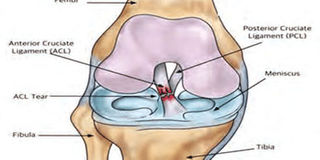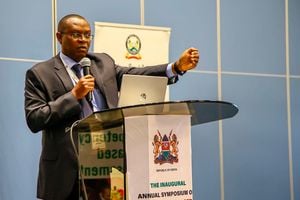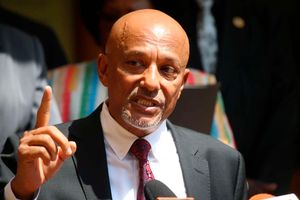Anterior Cruciate Ligament injury can be fully managed with surgery

Depiction of an anterior cruciate ligament tear.
What you need to know:
- As always, prevention of the injury should be our (athlete, coach, surgeons and therapists) collective goal.
In a previous article we had discussed injuries to the Anterior Cruciate Ligament (ACL) and had focused mainly on prevention.
This week we will focus on the injuries in general particularly looking at the treatment options.
The ACL is one of the main stabilising structures of the knee. It plays an important role in controlling movement of the knee.
It is particularly plays the crucial role of stopping the lower leg from moving too far forward or the knee moving side to side during activity.
This control is important in athletes who are involved in sports that involves rapid change in direction like football, netball and rugby.
The ACL injuries afflict top professional sports people and we have read of them in games like football which we love to watch.
Some famous athletes who’ve been victim to these injuries include retired English striker Michael Owen, Swedish goal poacher Zlatan Ibrahimovic, golf super star Tiger Woods and more recently England forward Alexander Oxlade Chamberlain. All managed to return to the game and play at the very high level.
Feeling a “pop” sound
Most ACL injuries occur without any external contact. ACL tears are usually observed when one is in motion and rapidly turns or changes direction with the foot planted on the ground.
If the foot does not move with the leg, or lags behind, the movement twists the knee which is supporting the body weight at the time.
Most athletes describe feeling a “pop” sound in the knee and are then find they are unable to continue playing.
Much as clinical examination is always important, it is almost impossible assessing these acutely injured knee due to the amount of pain and swelling. For this reason an MRI scan is obtained early to assess the extent of the injury.
In the athletes who don’t realise the severity of the injury, they describe the knee feeling unstable and giving way when they return to sport.
Subsequent management of an ACL injury is largely dependent on sporting ambition particularly if it involves games that require rapid change in direction.
With the vast majority of people in high demand sports, surgical reconstruction of the ACL is recommended.
Timing of the surgery is another important factor.
The main concern with early surgery (first three weeks) is the risk of extreme stiffness due to scar tissue which may form. For this reason the vast majority of surgeons recommend waiting a few weeks until the swelling has settled down and movement returns.
Whilst waiting, physiotherapy is recommended and aims at strengthening the muscles and restoring movement.
Normally at two-three months after injury the surgery is performed with a much lower risk of the knee getting stiff.
Professional well paid athletes may choose early surgery as they have dedicated medical teams.
This set-up along with intense physiotherapy allows them to avoid some of the complications of early surgery. The recovery is long and requires commitment and specialist physiotherapy.
The average time to returning to sports after surgery is nine to 12 months.
Earlier return to intense actions runs the risk of having a re-injury which is frustrating.
Despite the seriousness of this injury advances in surgical management and rehabilitation have meant good results are observed most of the time and return to sport is achievable for the committed athlete.
As always, prevention of the injury should be our (athlete, coach, surgeons and therapists) collective goal.
A good pre-season with targeted muscle strengthening and balance exercises followed by regular warm up and warm down has been shown to be beneficial in avoiding these injuries.
Mordicai is an orthopedic surgeon specialising in sports injuries. mordi14@ me.com



